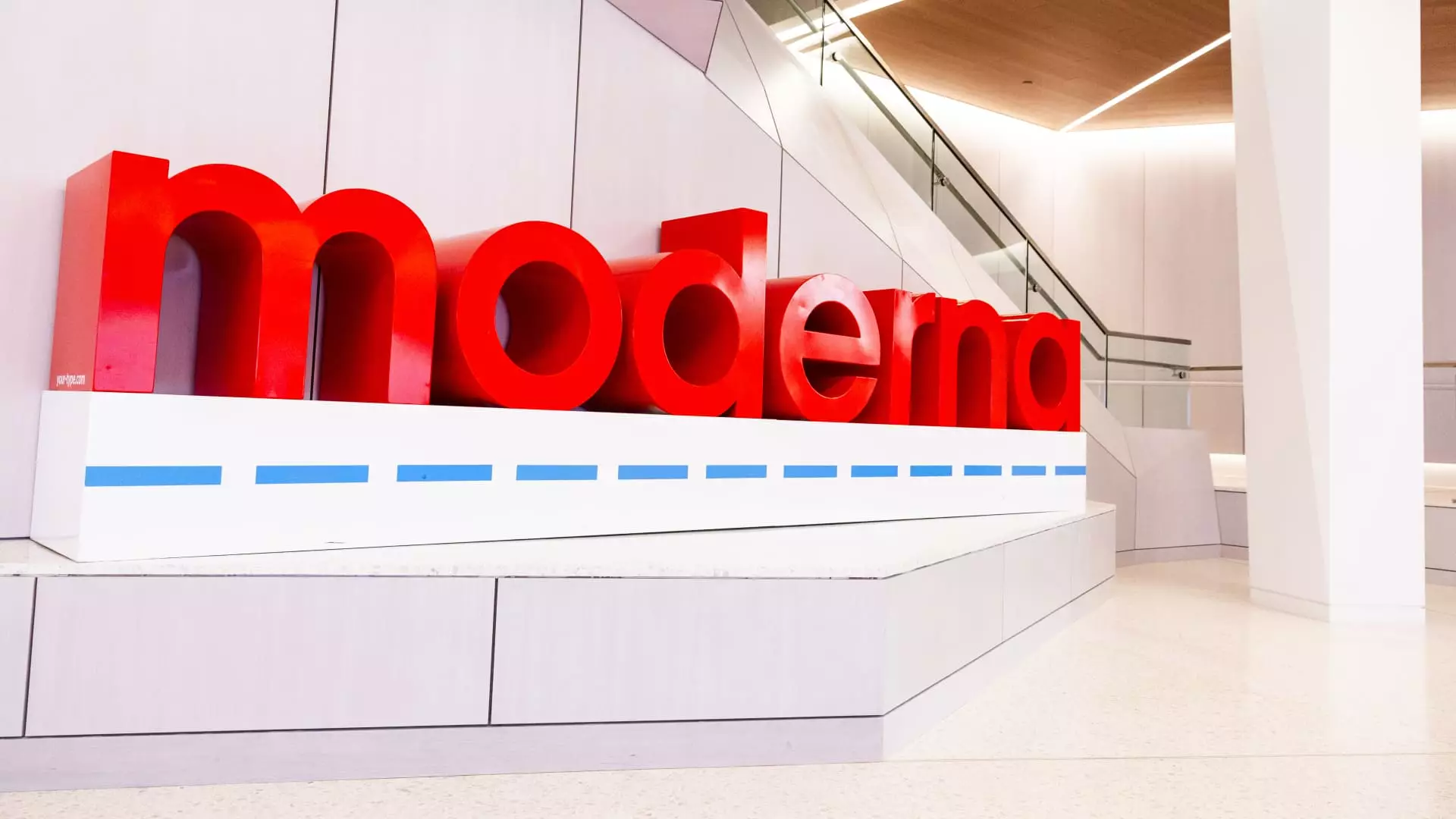Moderna, a prominent player in the biotechnology sector, has found itself navigating turbulent waters as it lowers its revenue projections for 2025. The company has revised its sales guidance by a staggering $1 billion, anticipating a shift in market dynamics influenced by various potential headwinds. This analysis delves into the factors contributing to Moderna’s revised outlook and the broader implications for the biotechnology industry amid ongoing challenges in the vaccine landscape.
On the cusp of an uncertain market, Moderna has adjusted its revenue expectations for 2025 to a range between $1.5 billion and $2.5 billion, indicating a significant drop from the earlier forecast of $2.5 billion to $3.5 billion. As articulated by Moderna’s CFO, Jamey Mock, this change reflects the company’s cautious stance as it confronts emerging challenges. The anticipated revenue will primarily stem from the sales of its COVID-19 vaccine and a newly introduced vaccine targeting respiratory syncytial virus (RSV). Most of this income is projected to occur in the latter half of the year, even as the overall market for COVID-19 vaccines appears to be stabilizing at lower levels than in prior years.
Moderna finds itself in a market defining phase as it faces growing competition in the COVID-19 vaccine arena. The company’s market share in the U.S. fell from 48% in 2023 to 40% by the end of 2024, an alarming trend that could continue diminishing its influence in the retail sector. The co-commercialization agreement between Sanofi and Novavax adds further competitive pressure, potentially jeopardizing Moderna’s foothold in a market where sales are already declining.
Another significant factor contributing to these challenges is the declining vaccination rates observed in the U.S. The 7% drop in vaccinations within the retail market from fall 2023 to fall 2024 suggests that the urgency for COVID-19 vaccines is waning. Such statistics raise concerns about Moderna’s ability to recoup previous highs in revenue, especially when the market for COVID-19 vaccines becomes increasingly saturated.
In response to these market challenges, Moderna has announced its intention to cut costs significantly, aiming to save $1 billion in cash expenses for 2025, with an additional target of $500 million for 2026. This strategic pivot signifies a deliberate effort to preserve cash flow as the company braces for potential revenue declines. By focusing on reducing expenditures, Moderna aims to sustain its operational viability while investing in its portfolio diversification—a necessity in an evolving landscape where reliance on a single product is becoming risky.
Mock’s cautious optimism comes through in his acknowledgment of the uncertainties facing the company. By preparing for potential headwinds, Moderna is adopting a pragmatic approach that could enable it to leverage new opportunities as they arise, despite the likelihood of short-term setbacks.
Amid these setbacks lies the silver lining of innovation. Moderna is charting a course toward expanding its product offerings, with plans for ten new approvals within the next three years, including combination vaccines for COVID-19 and influenza. This future-facing strategy is critical for the company’s sustainability; diversification into next-generation vaccines could mitigate risks associated with reliance on a singular revenue source.
The upcoming presentations at events such as the JPMorgan Healthcare Conference underscore the importance of building partnerships and exploring deals that could bolster Moderna’s upcoming initiatives. This focus on innovation and strategic partnerships is vital if the company is to regain its momentum in a rapidly changing industry.
As Moderna recalibrates its expectations for the future, it showcases the complexities inherent in the modern biotech landscape. With a combination of competitive pressures, declining vaccination rates, and strategic movements toward cost reduction, the company finds itself at a pivotal junction. However, its commitment to innovation and diversification sheds light on potential pathways to recovery and growth, even as it grapples with the realities of a post-pandemic world that continues to evolve. In the face of numerous challenges, the ability to adapt and pivot will determine not just Moderna’s fate but also that of many companies within the vaccine space.

